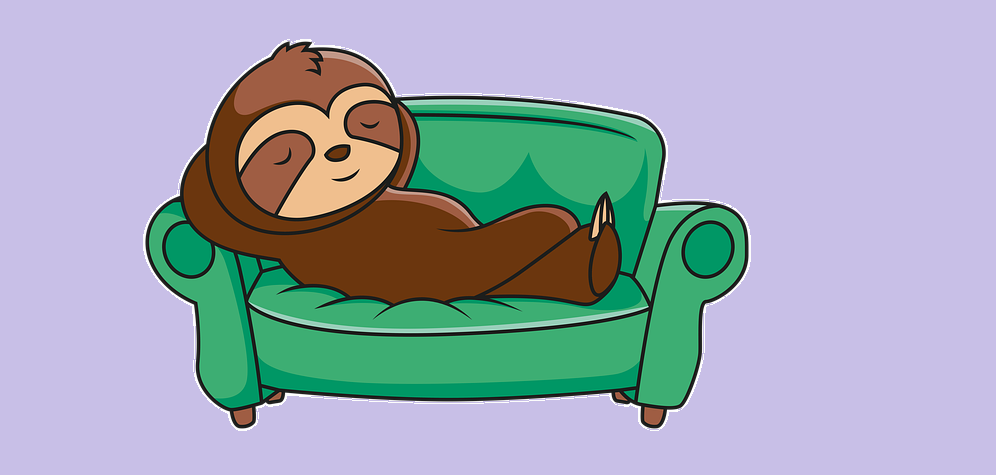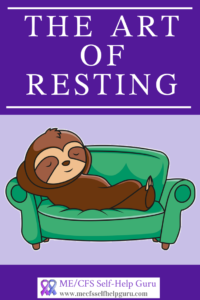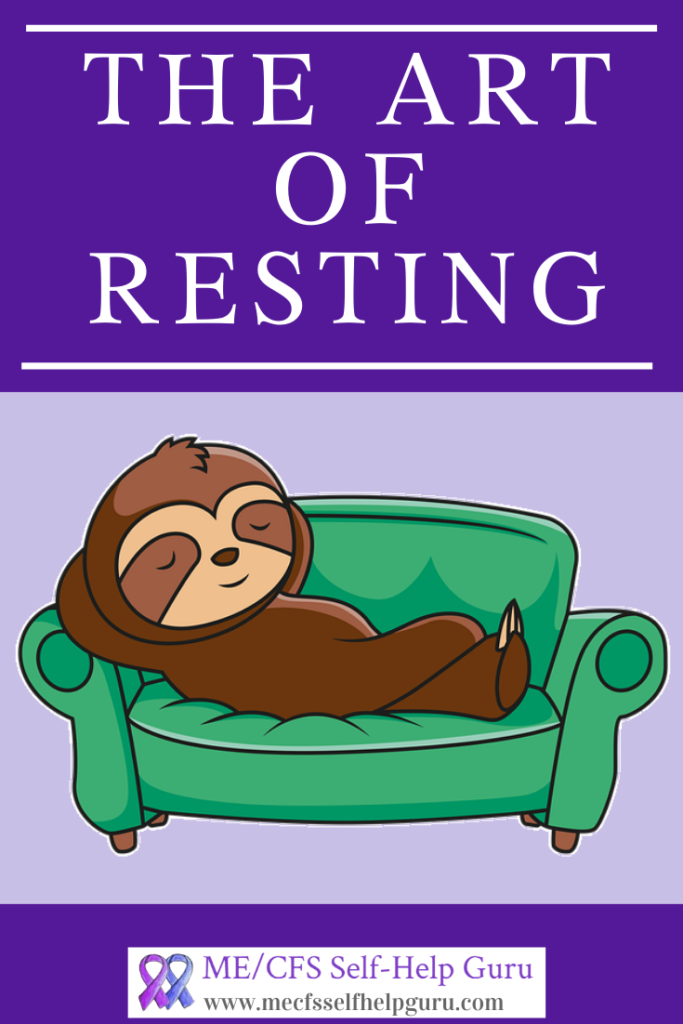This is the original version of a post I wrote especially for the ProHealth website and first appeared there on 12/09/21.
When you have a chronic illness like ME/CFS, long COVID, Fibromyalgia or Lyme disease, resting becomes a very big part of your life. Before I got ill, I didn’t even understand the word rest. The thought of a beach holiday horrified me unless I could play games constantly or swim. Read a book while lying on a sun lounger? I don’t think so!
At the beginning of the illness when I was really sick, I had to rest because I just couldn’t do anything else, but as I started to improve slightly, resting became a chore, and most of the time I was approaching it as something I had to do, while I waited for whatever I could do next. Unfortunately though, that attitude to rest doesn’t actually make it very restful.
Eventually, I realised that if I got better at resting, I might just benefit, I might find a little more energy for other things. As I’ve always been a person who likes to rise to a challenge, I set myself the challenge of learning how to rest well.
Recognising rest as a crucial strategy
One of the first things that helped was realising that rest isn’t just a passive thing. It’s one of the most important ways you can contribute to your wellbeing. Getting good at resting is a way that you can take some control. Resting has a very important purpose. It seems obvious to me to write that now, but that little gem of insight took a while to come to me. Once I could really value its role in my wellbeing, it became much easier to rest well. It helps to keep reminding myself of its importance, every time I take a rest.
Rest isn’t waiting
Even now many, many years after teaching myself the art of resting, I still sometimes find myself resting with an attitude of waiting. We want to be able to do things, we want to be able to enjoy life. Rest can still seem like a necessary evil. But waiting isn’t really very restful. When you’re waiting, it’s hard to switch off and calm down. Your mind stays busy, often planning whatever it is you might be waiting to do or resenting not being able to do something now. Helpful rest comes from letting go completely of any need, want or desire to be doing.
Helpful rest comes from letting go completely of any need, want or desire to be doing.
Knowing the difference between quality rest and low energy activity
Another thing that took me a while to discover is that not all rest is quality rest. Some rest, like reading a book or watching a movie, is really just low energy activity. There is a place for low energy activity, it helps us not to spend too much energy. We may need it so that we have enough to spend on other things throughout the day, but it doesn’t have the same value to our wellbeing as quality rest. The key is to have a planned routine that includes both low energy activity and quality rest.
Quality rest
Quality rest involves really relaxing and entering into a state of peace. It usually only happens when you can let yourself be present in the moment. For some, that can come from listening to some calming music, or lying in the sunshine listening to the birds singing. Others might need to lie in a dark, quiet room or be guided through a meditation or relaxation exercise. This kind of quality rest can be quite challenging to do for long periods of time because our minds can get busy and take us away from ‘being in the moment’. It can also be a challenge to enter into that state in the first place, when this kind of illness tends to ramp up our nervous system.
Calming distraction
I’ve found that in order to enter into a state of quality rest, I might first have to spend some time distracting myself in a way that allows my body to calm down. I need something to engage my mind enough to stop it racing everywhere; something that’s calming and gentle. Doing an easy Sudoku deliberately slowly, or doing some colouring in can work quite well for me as a prequel for quality rest. It’s much easier to relax and be peaceful if I can get my nervous system to stand down first. When I’m really struggling to bring down my nervous system, my most effective tool to engage my mind and calm me down is Yoga Nidra.
 Napping
Napping
A short nap can be a helpful way of getting quality rest. If your body needs it, it can be easier to achieve than other forms of quality rest. With all the sleep disturbance issues involved in this kind of illness, many people worry about how napping might make night-time sleep more difficult. I’ve learned that napping is important if not napping would lead to me pushing myself. When I do take a nap, I set an alarm for 40 minutes.
Training your quality rest skills
Being able to relax in a peaceful state when you need to, can take some training. It can be hard to learn to let go and all new skills take conscious practise before they become unconscious. Conscious practise needs energy and is hard when you’re most in need of quality rest. It’s a great idea to practise these skills when you’re feeling most alert. Because of all the practice I’ve had with guided meditations and relaxation practices, I can now enter into that peaceful state quite easily, even when I’m tired.
Bringing down stimulation and stimulation breaks
Quality rest doesn’t have to be for long periods of time. In fact, unless you actually fall asleep it can be difficult to stay present and in a state of peaceful relaxation for long, especially without having your attention gently guided.
Really short, regular periods of quality rest, as little as 1-5 minutes, can be very effective at keeping the nervous system under control, making it much easier to relax when you take your more substantial rest periods. In addition, if you keep yourself from becoming too over-stimulated, you’re likely to be able to stay more relaxed while you’re doing things, which will use your energy more efficiently.
To be really effective, these short breaks need to be away from all stimulation. I seek out a quiet, dark room. If that’s not possible you could try dark glasses with noise cancelling earplugs.
My most effective longer quality rests are also in a quiet, dark room. Minimising stimulation can help you reach that state of peace a lot easier, especially when your resources are particularly low.
Knowing when to stop
Another part of the art of resting, involves stopping and resting before you get too tired. If you push to complete something before you rest, it’s likely that it will be a lot harder to relax and let go. Getting really good at resting involves developing an awareness of the effort involved in what you’re doing and stopping to rest as soon as you notice that effort is increasing.
Taking a moment to enjoy and appreciate rest
The final ingredient to really turning resting into an art form, is to choose to enjoy and appreciate it in the moment that you’re doing it. Sometimes positive mental commentary helps me get into that state. I remind myself how nice it is to be resting in the way I am. When I’m reading my relaxing novels, I take a moment to appreciate the entertainment I’m enjoying, I take a breath and relax into that enjoyment. If I’m doing a guided meditation or relaxation, I tend to wait until the end and point out to myself how good it feels to be relaxed in this moment and how wonderful that must be for my healing.
Summary
The art of resting involves managing your energy well with a planned combination of low energy activity and quality rest. It involves knowing when to stop and keeping stimulation down with regular stimulation breaks. But most of all, it means valuing the role rest plays in your well-being, giving up the need to be doing or waiting to do, and becoming present to the enjoyment you can find in that rest.
Image by Ralf Designs from Pixabay








Thanks Julie! These are all great reminders about rest and especially appreciating how good it feels to be so relaxed afterwards.
Resting is so, so important and “knowing when to stop” is the hard part sometimes. Pain says one thing, but your mind says, just keep going for another minute, then another. Then before you know it, it’s all gone bad and it’s so much harder to recover.
Great post.
C
I just reread this post. It’s so good!
Thank you Ed